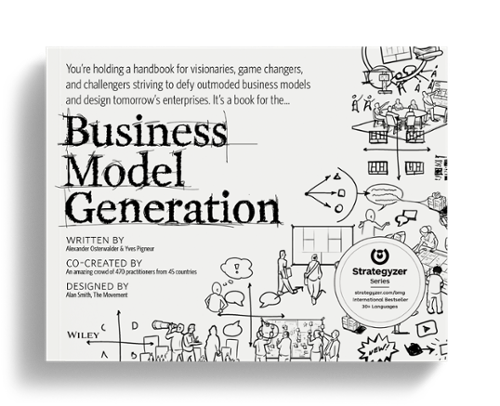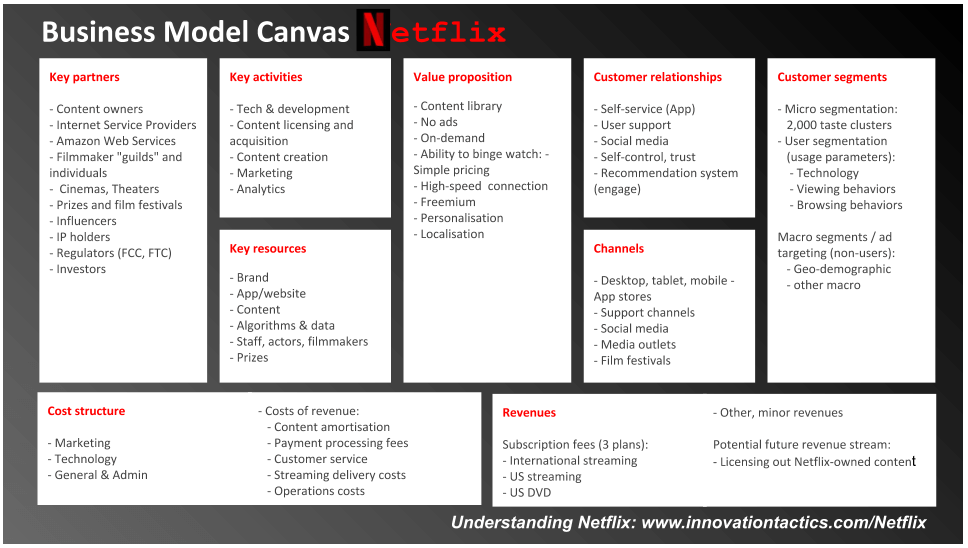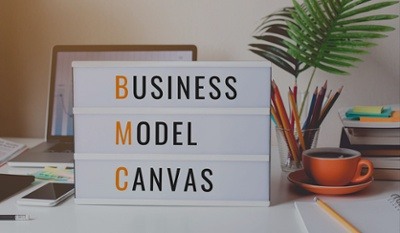How to create a business model canvas: the ultimate guide
This blog will explain what a BMC is and a step-by-step explanation of how to define a business model with this famous canvas.
By Role
By Industry
By Target Customer
What We Offer
We drive business growth by improving operational efficiency through process optimization, smart automation, and cost control. Our approach boosts productivity, reduces expenses, and increases profitability with scalable, sustainable solutions
Customer Experience
We design memorable, customer-centered experiences that drive loyalty, enhance support, and optimize every stage of the journey. From maturity frameworks and experience maps to loyalty programs, service design, and feedback analysis, we help brands deeply connect with users and grow sustainably.
Marketing & Sales
We drive marketing and sales strategies that combine technology, creativity, and analytics to accelerate growth. From value proposition design and AI-driven automation to inbound, ABM, and sales enablement strategies, we help businesses attract, convert, and retain customers effectively and profitably.
Pricing & Revenue
We optimize pricing and revenue through data-driven strategies and integrated planning. From profitability modeling and margin analysis to demand management and sales forecasting, we help maximize financial performance and business competitiveness.
Digital Transformation
We accelerate digital transformation by aligning strategy, processes and technology. From operating model definition and intelligent automation to CRM implementation, artificial intelligence and digital channels, we help organizations adapt, scale and lead in changing and competitive environments.
Operational Efficiency
We enhance operational efficiency through process optimization, intelligent automation, and cost control. From cost reduction strategies and process redesign to RPA and value analysis, we help businesses boost productivity, agility, and sustainable profitability.
Customer Experience
Marketing & Sales
Pricing & Revenue
Digital Transformation
Operational Efficiency
Business Model Canvas: What it is and how to create a business model canvas
Have you ever felt that it is difficult to communicate and set strategic objectives in your company? This is a common issue and depending on the nature of the problem there may be different solutions. The truth is that the easier it is to understand what your business and each of its units do, the easier it will be to convey your ideas to your employees, partners, and investors, so it will not be so difficult for them to understand you and you can count on everyone's collaboration to set more precise and robust goals.
Therefore, I bring you an extremely useful and compact tool to achieve that clarity when explaining to the world what you do. Today we are going to learn how to build a Business Model Canvas (BMC) step by step. Stay and read this blog to discover what this tool is, what it is for and how to build it step by step.
If you want to know what a business model is, I invite you to visit this blog that explains it in detail: What is a Business Model? Business Models Explained
Index
A business model is made up of nine building blocks, which are the most important pillars that every company should identify to understand how to organize its resources and plan its strategic objectives. A BMC is nothing more than a one-page canvas that helps you synthesize and visualize the logic of your business model in a clear and orderly way. It is the best way to understand and explain what your company does to generate value.
The building blocks that make it up are:
|
|
|
|
|
|
|
|
|
To learn in much more detail about what each of these blocks contains, I recommend reading the book "Business Model Generation" by Yves Pigneur and Alexander Osterwalder. Anyway, in the last section of this blog we summarize what you need to know about each one to build your canvas.
If you want to see more details about these blocks, this article will help you to quickly review them: What is a business model?

For Yves Pigneur and Alexander Osterwalder, a business model portrays the logic by which a company generates and delivers value, and a canvas is a visual summary of this definition. Separating the different building blocks allows you to see the overall structure of your value proposition and everything you need to support it. Perhaps the most notable advantage is that it gives you the ability to set strategic objectives based on the performance of each block, but it also gives you the clarity to understand it in a simpler way and therefore also to communicate and explain your business to anyone, but it doesn't stop there.
In addition to helping you plan, there are other uses that companies have found for it, here are three additional applications.
Strategyzer mentions that he has seen companies rely on the blocks of the canvas to make dashboards. This makes a lot of sense, once you have identified the pillars of your organization you can propose objectives and goals for each one, determine the indicators with which you are going to measure results and performance and finally document relevant information to measure them. In any case, there are continuous improvement philosophies such as DMAIC of the Six Sigma methodology that you could use to make the most of the processes involved in each block once you have defined your business model.
Once you understand how to build a canvas, you can venture into exploring your competitors' business models. You may have to invest extra time to build it yourself, but you will be able to understand their strengths and weaknesses, as well as their limits and opportunities (which you may well be able to exploit). Although there are other tools or methodologies to do this, the Business Model Canvas can be done quickly and easily. If you build several canvases and place them side by side, you can quickly make comparisons and see what is out there, as well as identify new ways to generate added value that differentiates you from your competitors.
Just as I mentioned in the previous point, you can build exploratory canvases without a lot of detail, which can help you to come up with new value propositions and prototype the whole business model around this idea. Seen in this way, the canvas is a kind of template for idea generation. Remember that a company can have several business models, in essence, you will need one for each value proposition.
I also recommend you read this article on the types of business models to get an idea of the wide variety of options you have to innovate: 50 Types of Business Models (2021) – The Best Examples of Companies Using It
As mentioned before, a business model consists of nine blocks, so you should gather the information you will put in each of them. To do this, you should first put together a cross-functional team, so that different departments of your company collaborate, as they know their environment best and will surely bring valuable perspectives to your canvas. You can include, for example, staff representing marketing, technology, engineering, purchasing, logistics, accounting, among others.
Once you have your team in place, you should document the information. Since the canvas is a tool to do this quickly, you could start by using it as a skeleton and later go into more detail in a formal document.
One good thing about building a BMC is that you don't have to start from scratch, there are several websites like Strategyzer and Canvanizer that will give you an online template. Here you can also find a template for you to fill in with us.
Here is a step-by-step guide on how to fill it in, as well as some images with examples of the BMCs of some famous companies to give you an idea of how to fill in the fields.
Customers are the key to a successful business. Therefore, you must know who you are targeting with your value proposition. You can have several market segments, the important thing is to identify them through needs, behaviors, and attributes they have in common. Now, who do you want to sell to?
What is it that you are offering to your market segment? What problems are you solving with your product/service? Remember that this is the reason why your customers are looking for you, so you should try to find out what is the difference between your value proposition and that of your competitors.
In some cases, design is also important, as in industries such as fashion or among competing devices such as mobile phones, this can be a determining factor.

In point 3 you established how your customers communicate with you, but here you need to determine how you will respond to them. What kind of relationship will you have to serve them?
This is the cash flow that is generated when market segments purchase your product or service. What price do your customers buy from you? How do they pay? How would they like to pay? How many revenue streams do you have?

This blog will explain what a BMC is and a step-by-step explanation of how to define a business model with this famous canvas.

When searching the internet for what a business model is, you have probably come across the following sentence by Alex Osterwalder: "A business model...

Imagine that you are going to build your own house, the one you have dreamed of and for which you have been saving for years, you have everything in...